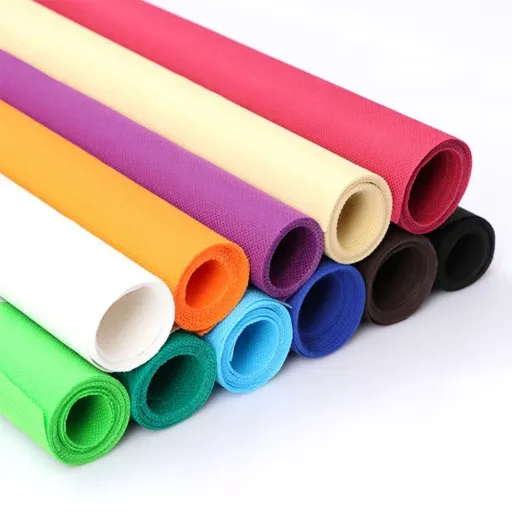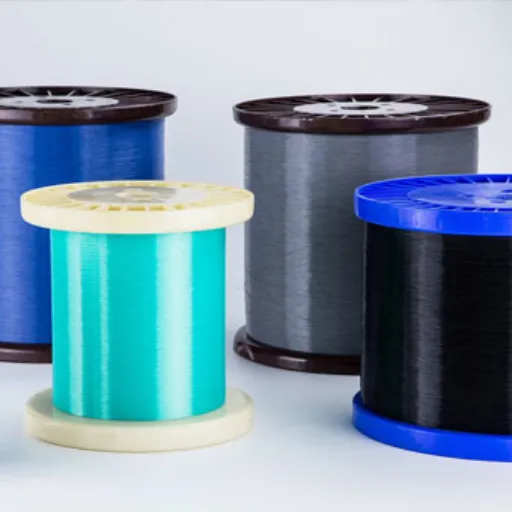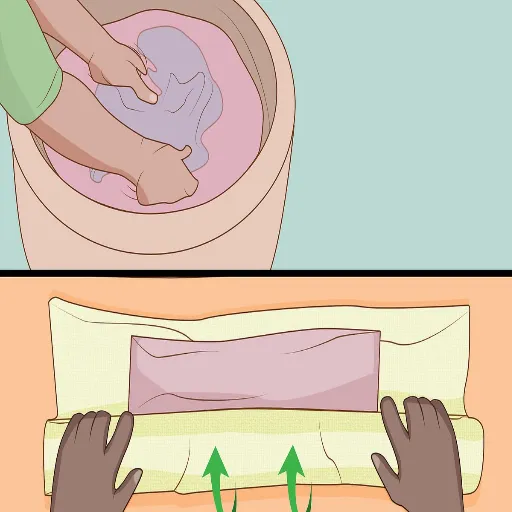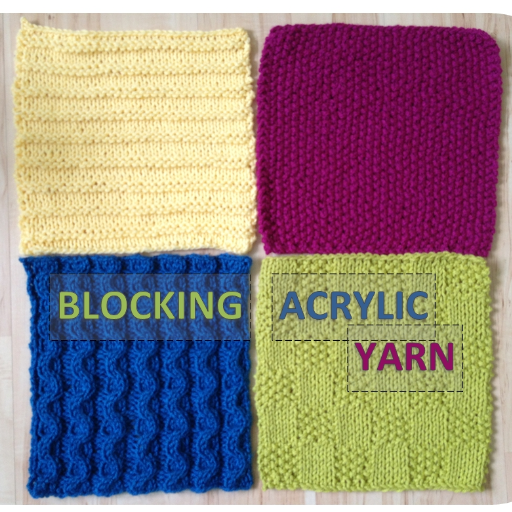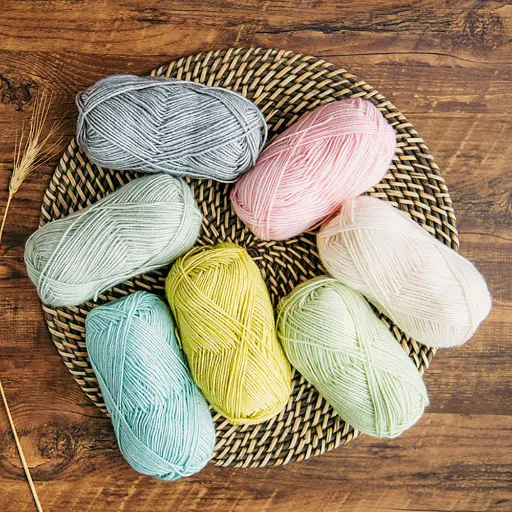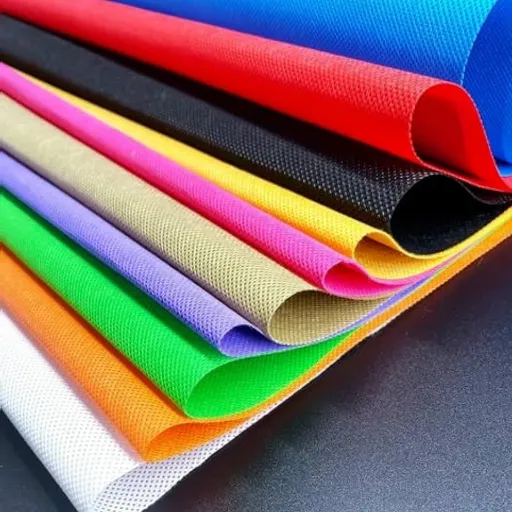When choosing the perfect fabric for apparel, household goods, or industrial purposes, the argument between polyester and cotton usually takes center stage. Both are very popular materials, yet they differ significantly in their composition, performance, and uses.
Whether you’re wondering which fabric is more breathable, more durable, or more eco-friendly, a few fundamental differences between cotton and polyester might help you make an informed choice. This article examines the characteristics of these two fabrics, compares their pros and cons, and enables you to determine which one better suits your purpose.
Let’s unravel the polyester-versus-cotton mystery by exploring their origins, characteristics, and key uses!
Material Properties of Polyester and Cotton
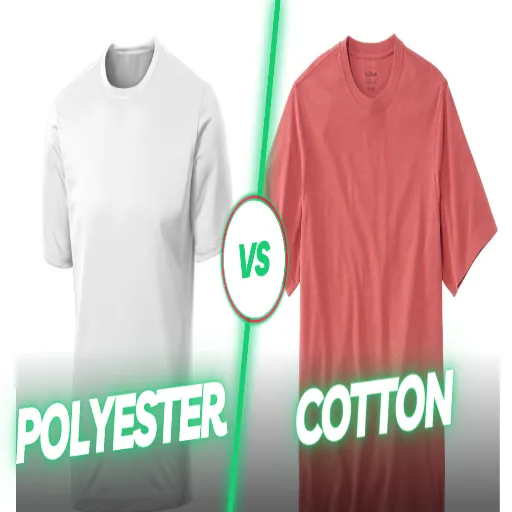
Polyester and cotton have different physical qualities that make them differ in the way they perform and in how users implement them.
Polyester Properties
- Durability: It is very durable, stretches very little, will not shrink, and resists wrinkling; this makes it best for garments and textiles that are made to last.
- Moisture Resistance: As a water-resistant fiber, it dries faster than others and stains less easily. Therefore, it is ideal for activewear.
- Eco-Friendliness: Polyester is derived from petroleum. So it is not biodegradable naturally. However, alternatives to recycled polyester are becoming increasingly common.
Cotton Properties
- Breathability: Cotton is highly breathable and absorbs moisture, a property that makes it comfortable to wear, especially in hot climates.
- Softness: It is naturally soft and gentle on the skin, making it ideal for casual wear.
- Eco-Friendliness: Cotton is a sustainable fiber; however, its production can consume vast amounts of water and pesticides, raising questions about its sustainability. Organic cotton provides a more sustainable alternative.
What is Polyester?
Polyester is an artificial fiber derived from petrochemicals. Its attributes considered are durability, versatility, and the inherent property to resist shrinking or stretching. This man-made fiber is easily and cost-effectively incorporated into textiles.
Wrinkle-free and quick-drying features are key attributes of polyester fabrics when selecting active wear, outerwear, and even home furnishings. But, being a synthetic fiber, polyester is often said to be less pleasant in warmer conditions than natural fibers such as cotton.
Recent technological advancements have also led to the development of improved polyester blends, thereby enhancing the comfort and performance of the fiber. From an ecological perspective, it is not biodegradable; however, new recycling technologies have evolved in recent times, such as drawing polyester from plastic bottles, which attempts to reduce its ecological impact.
What is Cotton?
Cotton is a natural fiber extracted from the hair on the seeds of the cotton plant, which mainly belongs to the genus Gossypium. It has been cultivated for thousands of years and is one of the most widely used fibers in the textile industry due to its softness and breathability.
Cotton is renowned for its comfort and is utilized in a wide range of applications, including clothing, bedding, and numerous other products. The fiber is absorbent and helps keep moisture away from the skin, which is favorable in warm climates.
Textile fostering developments and organic cultivation have led to further improvements in cotton production, resulting in a reduced environmental footprint, although considerable challenges, such as irrigation and pesticide use, remain.
Key Differences Between Polyester and Cotton
As stated earlier, the origins, nature, and uses are fundamentally different. Polyester can be synthesized from crude oils, while cotton comes from the cotton plant. Polyester is more durable in that it resists stretching, shrinking, and wrinkling. Cotton is, however, preferred for more breathable and softer items, such as shirts and bed linens.
Another element that separates the two is maintenance. Polyester resists wrinkles, dries quickly, and is easy to care for, but it does retain odors, even if it is slightly less absorbent than cotton. Cotton retains moisture well and cleans up with ease, making it ideal for everyday clothes. However, it requires occasional ironing and regular maintenance to preserve its appearance.
In addition, due to the high environmental costs associated with standard polyester production methods, there is a question of sustainability in modern manufacturing.
Uses and Applications of Polyester and Cotton Fabrics
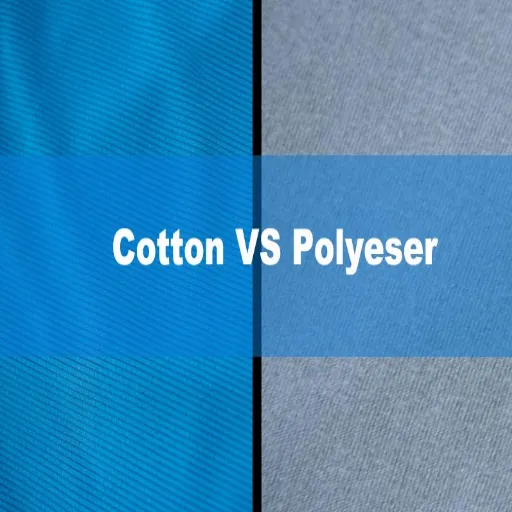
Apart from their distinct characteristics, polyester and cotton fabrics are utilized in various industries.
Polyester Fabric Uses
Polyester is commonly used in active-wear apparel, outer garments, and furnishing purposes such as curtains and upholstery, due to its hard-wearing, wrinkle-resistant properties, and its ability to resist water absorption. It is also considered for industrial purposes, such as conveyor belts and ropes.
Cotton Fabric Uses
Cotton is fundamental for everyday clothing, including T-shirts, jeans, and undergarments, due to its silky nature and breathability. Cotton is also widely applied in home textiles, such as linen sheets, towels, and tablecloths, which provide for nice comfort and the convenience of maintenance.
Common Uses of Polyester Fabric
The polyester fabric is highly versatile and suitable for many uses due to its durability, resistance to wrinkles, and low cost. Above are the significant uses of polyester fibres:
- Apparel: Polyester is widely used in activewear, jackets, dresses, and blends because it retains its shape and does not shrink or stretch easily.
- Home Textiles: This involves creating curtains, upholstery, and carpets that require durability and stain resistance.
- Industrial Applications: Polyester is chosen for making ropes, seatbelts, and conveyor belts due to its strength and resilience.
- Outdoor Gear: Its moisture-wicking and weather resistance make it ideal for producing tents, sleeping bags, and outdoor furniture.
- Recyclable Uses: Many sustainable initiatives utilize recycled polyester to produce eco-friendly clothing and products, thereby reducing waste and supporting circular fashion.
Common Uses of Cotton Fabric
Cotton fabric has been the best-selling fabric for several centuries due to its softness, sturdiness, and breathability, making it ideal for a wide range of utility applications. Below are some of its typical applications:
- Clothing and Apparel: This fiber is primarily used in the production of casual outfits, which typically include t-shirts, jeans, dresses, and undergarments. It absorbs moisture and provides comfort for casual and formal wear.
- Home Textiles: Cotton is very commonly used in home goods, such as bed sheets, pillowcases, towels, and curtains, giving homes a warm and natural feel.
- Industrial Uses: Industrially, cotton is also used in the production of canvas, filters, and tarpaulins. Cotton is strong and versatile.
- Medical Applications: Cotton finds several hygienic applications, including bandages, swabs, and gauze materials, due to its hypoallergenic and breathable properties.
Benefits of Each Fabric
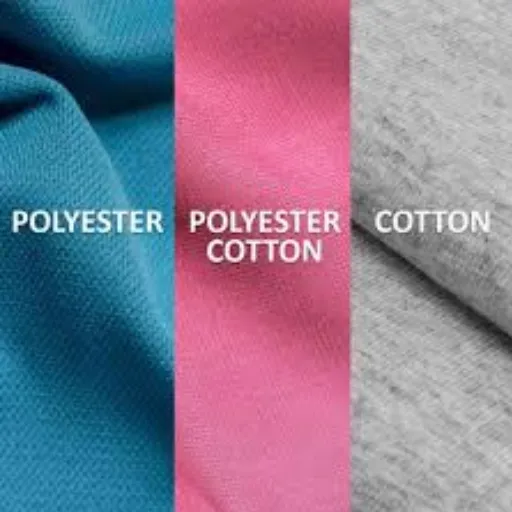
Benefits of Polyester Fabric
The polyester fabric offers a great range of benefits and is thus used in numerous industries. The fabric is highly durable and resistant to stretching, shrinking, and abrasion, thereby extending the lifespan of clothes and other textile products for a longer period.
Due to their lightweight nature, polyester fibers do not sag, making them ideal for activewear and items that require flexibility. Such properties make it highly convenient for outdoor and performance wear, with a speedy drying capacity.
Wrinkle resistance is another key feature of polyester fabric, requiring little ironing and contributing to its ease of care. Being able to retain color well means that it embodies bright designs with colors that do not fade in repeated washing cycles.
It is often blended with other fibers to enhance comfort and performance, and is widely used in fashion, home textiles, and industrial applications.
Benefits of Cotton Fabric
Cotton fabric is primarily known for its softness and breathable comfort, making it a preferred choice for clothing and textile items. It is highly absorbent, which helps keep bodies cool and dry in warm climates.
Cotton is also hypoallergenic, making it an ideal choice for individuals with sensitive skin or those who suffer from allergies. In fact, it is a biodegradable fiber from an eco-friendly perspective, meaning it aligns with sustainable approaches.
Additionally, this wonderful fiber is easy to dye and retains color very well, which prevents textile colors from fading away over time.
And whether it finds use in the casual world or home décor, cotton is equally versatile, serving both comfort and functionality in daily life.
Environmental Impact of Polyester vs Cotton
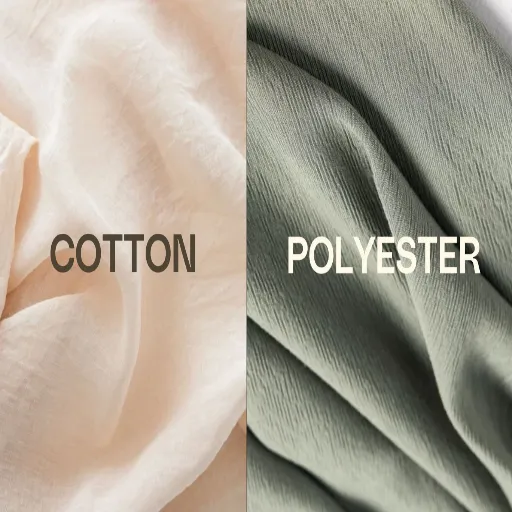
Environmental impacts differ between polyester and cotton. Polyester, a synthetic fiber derived from petroleum, has a significantly high carbon footprint due to its energy-intensive production methods. Additionally, it does not decompose, thereby causing land pollution for decades and releasing microplastics as it is washed.
On the other hand, cotton grows naturally and decomposes, yet it poses environmental concerns. To produce cotton, enormous amounts of water are required, and the use of pesticides and fertilizers can harm the ecosystem and reduce water reserves. Hence, organic cotton is best, as it does not utilise such chemicals and employs less water in its growing.
The choice of the two will exclude environmental considerations and include some sustainable elements, such as recycled polyester or organic cotton.
Environmental Concerns with Polyester Fabric
Like all other synthetic fibers derived from petroleum, polyester poses a host of environmental challenges at every stage of its lifecycle. First, polyester is not biodegradable. This means that polyester could lie in landfills for several hundred years.
Secondly, polyester also releases microplastics when it is washed, and these substances reach water bodies, thereby endangering aquatic ecosystems and potentially entering the food chain. Other industrial activities associated with polyester manufacturing require significant energy demands from fossil fuels, which consequently lead to carbon emissions and contribute to global warming.
Recycled polyester, however, is an environmentally friendly alternative, as it utilizes waste plastics that already exist. Nevertheless, it is not the ultimate solution, given that it also contributes to microplastic pollution. Hence, innovation in sustainable materials and awareness about the environmental impacts of textile choices must be addressed.
Environmental Benefits of Cotton Fabric
Cotton fabric offers numerous environmental advantages, particularly when grown organically and sustainably. Long-term waste is prevented by cotton because it is a natural and biodegradable material, unlike synthetic fibers. Organic cotton farming does not use synthetic pesticides and fertilizers that can be harmful to soil and the ecosystem. Additionally, advancements in water-use-efficient irrigation systems and improved farming techniques have significantly reduced the water footprint of cotton production in many parts of the world. Consumers who support such cotton thereby contribute to lessening environmental damage and encouraging sustainable textile industries.
Care Instructions for Polyester and Cotton Fabrics
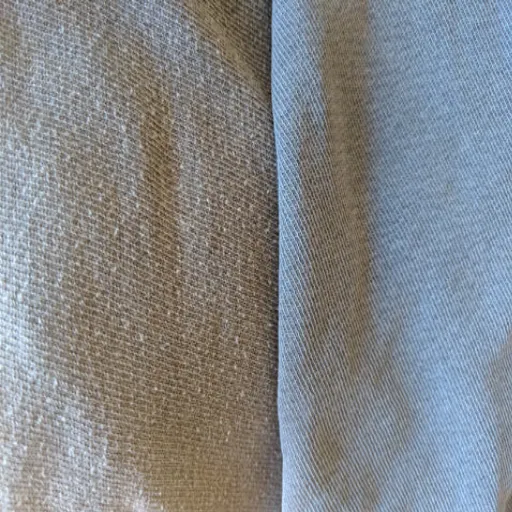
General Care Guidelines
| Care Step | Instructions |
|---|---|
| Washing | Use a gentle cycle with cold or warm water for both polyester and cotton fabrics, avoiding hot water as it can cause shrinkage or, in extreme cases, damage to fibers. |
| Detergent | Choose a mild detergent to avoid compromising the quality or color of the fabrics. |
| Drying | Tumble dry on low or hang dry to prevent shrinkage and maintain the fabric’s shape. |
| Ironing | Low heat for polyester and medium to high heat for cotton. You can always check the label to fine-tune these directions. |
| Stain Removal | Treat the stain immediately with a mild stain remover or liquid detergent, and avoid using harsh chemicals that could damage the fabric. |
| Storage | Store the fabric in a cool, dry place away from direct sunlight to prevent fading and mildew development. |
How to Care for Polyester Fabric
I tend to wash polyester materials in warm water with gentle agitation, often using a mild detergent free of bleach. The drying options I rely on may be tumble drying at a low temperature or air drying to protect the fabric. For iron work, low heat is the way, and I always request a pressing cloth laid between the iron and fabric to prevent scorching.
How to Care for Cotton Fabric
The cotton fabric is durable and easy to care for, provided you handle it properly. Cotton should be washed in cold or warm water with a gentle cycle to prevent shrinking and color fading. Keep in mind to use mild detergent and avoid harsh chemicals like chlorine, for they tend to weaken the fiber. In terms of drying, it is preferred to air-dry; however, if a dryer must be used, opt for low to medium heat to minimize heavy shrinkage. Ironing is done while the fabric is slightly moist on a medium to high setting to disperse wrinkles. Alternatively, hand washing and line drying can be promising treatments for delicate cotton apparel.
Reference Sources
The following are a few academic and research sources that provide documented evidence on the differences, environmental aspects, and properties of polyester and cotton:
- SAGE Journals
Title: “Biodegradability study on cotton and polyester fabrics”
The study focuses on the biodegradability of cotton and polyester fabrics, providing insights into their environmental impact. - De Gruyter Brill
Title: “Life cycle assessment: environmental profile of cotton and polyester-cotton fabrics”
Provides a life cycle assessment comparing the environmental profiles of cotton and polyester-cotton fabrics. - ScienceDirect
Title: “Reusing polyester/cotton blend fabrics for composites”
Regarding methods for reusing polyester-cotton blend fabrics, with a focus on sustainability efforts. - JSTOR
Title: “Cotton versus Polyester: Surprising facts on energy requirements for the production and maintenance of clothing made of these two kinds of fibers suggest priorities for …”
Compares energy requirements for producing and maintaining cotton and polyester fabrics. - Springer
Title: “Environmental impacts of polyester-cotton blend compared to cotton fiber in Brazil”
Evaluates the environmental impacts of both pure cotton and polyester-cotton blends in the Brazilian scenario.
Frequently Asked Questions (FAQs)
What are the main differences between cotton and polyester?
Cotton is a natural fabric made from cotton fibers, known for its breathability and comfort. In contrast, polyester is a synthetic fabric derived from petroleum products, making it durable and resistant to shrinking and wrinkles. While cotton is breathable, polyester is hydrophobic, meaning it repels water, making it less breathable compared to cotton.
Is polyester the same as cotton?
No, polyester is not the same as cotton. Cotton is a natural fabric derived from the cotton plant, whereas polyester is a synthetic fabric produced through chemical processes. Their differences in composition lead to distinct characteristics in terms of comfort, breathability, and durability.
What are the characteristics of cotton?
Cotton is known for its softness, breathability, and comfort. It is a natural fabric that allows for good air circulation, making it ideal for clothing, especially in warm weather. Cotton also tends to absorb moisture, which can help keep the wearer cool.
What are the characteristics of polyester?
Polyester has several unique characteristics, including high strength, resistance to shrinking and stretching, and durability. Polyester fibers typically dry quickly and are less prone to wrinkling compared to cotton. However, it is less breathable and may feel uncomfortable against the skin in hot conditions.
How do cotton and polyester fibers compare in clothing?
Cotton fibers are generally softer and more breathable, making cotton clothing comfortable for everyday wear. Polyester fibers, being synthetic, are stronger and more durable, and are often used in activewear and garments that require longevity. Many manufacturers also blend cotton with polyester to combine the best features of both fabrics.
What is the advantage of choosing polyester clothing?
Choosing polyester clothing offers several advantages, including durability, wrinkle resistance, and ease of care. Polyester garments can withstand wear and tear better than cotton and are less likely to fade in color. They are also quick-drying, making them ideal for sports and outdoor activities.
Can cotton be blended with polyester?
Yes, cotton can be blended with polyester to create a fabric that combines the softness and breathability of cotton with the durability and wrinkle resistance of polyester. This blend is popular in various clothing types, providing a balance of comfort and practicality.
Why is recycled polyester important?
Recycled polyester offers an environmentally friendly alternative to conventional polyester, as it is made from post-consumer plastic bottles and other waste materials. This process reduces plastic waste and the need for petroleum-based raw materials, making it a more sustainable choice for fabric production.
How do I choose between cotton and polyester for my clothing?
When choosing between cotton and polyester, consider the specific characteristics of each fabric. If you prioritize comfort and breathability, cotton is a great choice. However, if you need something more durable and easy to maintain, polyester may be the better option. Blended fabrics can also provide a good compromise.








